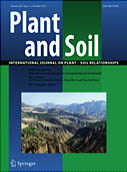Developing methodology around minirhizotron technology applied to wetland ecosystems
by Kathleen McCoy |
 Dr. Paddy Sullivan of UAA's Environment and Natural Resources Institute (ENRI) was
co-author of a paper published this fall in Plant and Soil titled "Advancing the use of minirhizotrons in wetlands."
Dr. Paddy Sullivan of UAA's Environment and Natural Resources Institute (ENRI) was
co-author of a paper published this fall in Plant and Soil titled "Advancing the use of minirhizotrons in wetlands."
Minirhizotrons are tiny video cameras that can take images of the roots of wetland plants in their soil environment, images that can help scientists measure elevated temperatures and levels of carbon dioxide in the wetland environment. According to an article on Seeddaily.com, the primary purpose of the published study was to develop a consensus on the use of these cameras in order to maximize their capabilities. The article also explains why the resulting data could be so important to climate scientists.
UAA's Dr. Sullivan was one of nine international scientists who came together to develop the minirhizotron research methodology. More of his research can be found on his Sullivan Lab website.
 "Developing methodology around minirhizotron technology applied to wetland ecosystems" is licensed under a Creative Commons Attribution-NonCommercial 4.0 International License.
"Developing methodology around minirhizotron technology applied to wetland ecosystems" is licensed under a Creative Commons Attribution-NonCommercial 4.0 International License.









